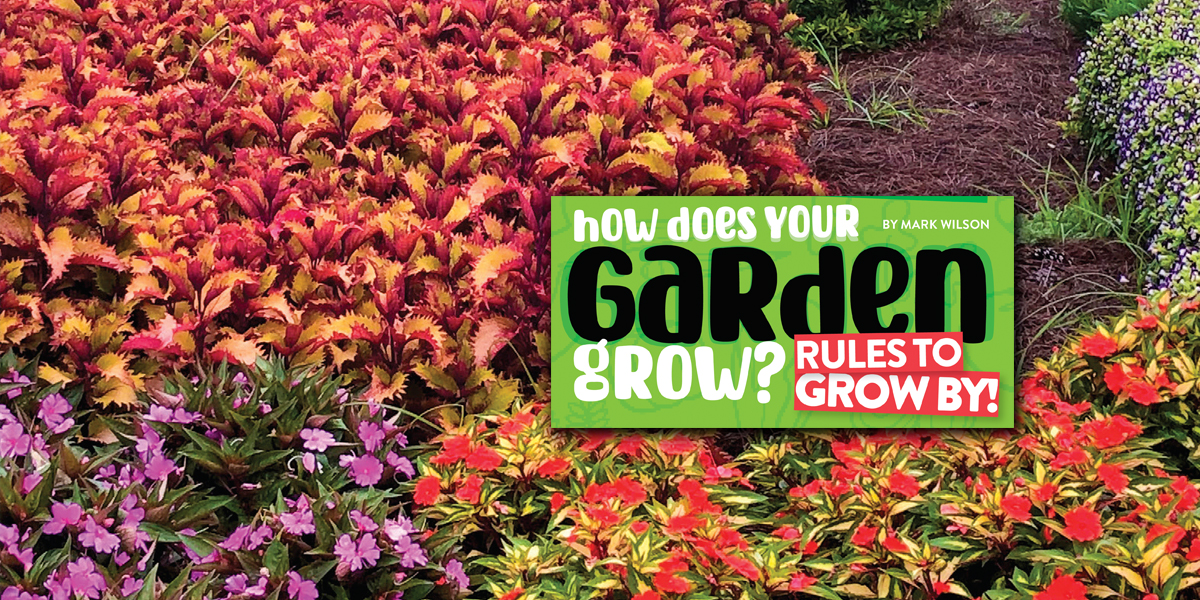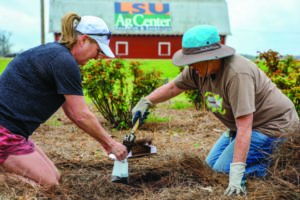HOW DOES YOUR GARDEN GROW?
RULES TO GROW BY !
BY MARK WILSON
Springtime brings about the start of a new year in the plant world, with plants coming out of dormancy and budding out. The question always is “When is spring really here?”
There are many ways to say when the spring season has started, from Punxsutawney Phil seeing or not seeing his shadow, to the Spring Equinox, to the Farmer’s Almanac, or when the pecan trees break their dormancy. All could be used, but for north Louisiana we can safely assume April 15th or Tax Day. By then, it is safe to say that the chances of a freeze are low enough to start planting and fertilizing.
This brings us to three rules to keep in mind when getting your garden ready:
RULE ONE
Gardening comes back to three things: Fertility, Light, and Water.
So where to start? The most logical answer is to start from the ground up, in this case with the soil.
RULE TWO
Never guess, get a soil test.
To grow the best plants possible, a soil test should be run. Soil sample kits can be picked up at the Master Gardener office at the Red River Research Station at 262 Research Station Road in Bossier or at many of the local plant nurseries. These boxes have step-bystep instructions on how to take and submit samples for analysis. Results will be sent back with a tailor-made work up of what the sampled areas need to grow the best plants possible. Most of the landscape plants and vegetables are looking for a fertile soil with a pH of 5.5-6.5. If soil pH changes need to be made, the soil test results will state how much sulfur (to lower pH) or lime (to raise pH) needs to be added to get the desired pH.
Once the pH is at the optimum level, the soil’s fertility comes next. While plants may make their own food, they get their water and nutrients from the soil. The soil sample results will tell what is needed and in what amounts. Sometimes a simple balanced fertilizer is needed such as an 8-8-8 or 13-13-13. More often than not, soils will not need all three macro-nutrients: Nitrogen, Phosphorus, and Potassium (N-P-K ). So fertilizers such as Urea (40-0-0), Triple superphosphate (0-46-0) or Potash (0-0-60) will be called for. These fertilizers will allow for the application of what is needed without adding what is not needed. If done in containers, a sample slow-release balanced fertilizer is ideal.
Now that fertility needs have been determined, it’s time to place it out for the plants to use. For lawns, April 15th is a great day to fertilize. This is late enough that the grass should be fully out of dormancy and actively growing.
An important fact is that a healthy lawn has less weeds. If a lawn is healthy and mowed at the correct height, there will be less weeds. Follow these guidelines for the best mowing heights:
¾” to 1.5” for Bermuda grass; 1” to 2” for Zoysia grass; 1” to 2” for Centipede grass; and 2” to 3” for St. Augustine grass. For more information on the best way to fertilize and take care of lawns, see “Louisiana Lawns Best Management Practices” Pub. 2940 at lsuagcenter.com.
RULE THREE
Right plant, right place, right time.
For those who are more interested in the landscape rather than the lawn, this is the time to look at what plant materials are still alive and coming back and what needs to be replaced.
Season selections should be made based on what will grow this season and what is growing now. Avoid planting full grown plants that will not make it much further into the season.
Choosing plants with similar needs, such as water requirements or light requirements, will make things easier overall. A way to remember this is plant ‘Like with Like.’ Plants should also be planted to avoid “instant” landscape caused by planting too many plants in a small area. Instead, space plants based on mature height and spread.
For more information on planting annual or perineal color see “Bedding Plants for Louisiana Landscapes” Pub. 2747 at lsuagcenter.com or call the Ag Center office at 318.408.0984.
Mark Wilson is the Master Gardener Coordinator for Northwest Louisiana.









